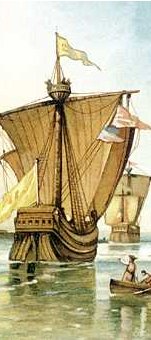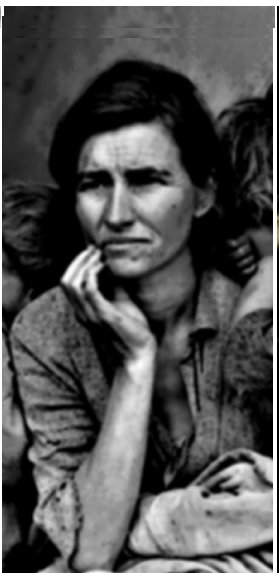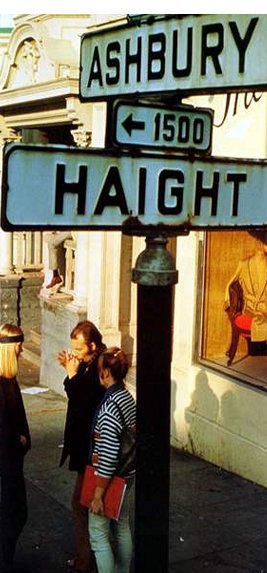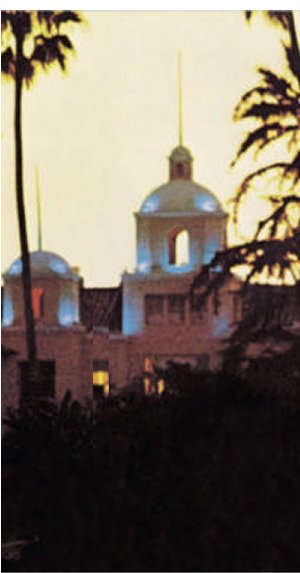The Two Sides of Los
Angeles Daniel Ahn
John D. Weaver was born in Washington D.C. and attended
Georgetown University, College of William and Mary, and George
Washington University.
After college, he worked for the NRA and, two years later, he moved to work for
the Kansas City Star. After serving
in WWII, he moved to Los Angeles to
be a writer. Weaver has written numerous books, short stories, articles, and
book reviews. He died in 2002 at the age of 90.
John D. Weaver¡¦s Los
Angeles: The Enormous
Village (1781-1981)
chronicles the growth of one of the largest, most productive cities on Earth
which, as Weaver describes, is ¡§the most American of all American cities.¡¨1
Weaver familiarizes the reader with the city using humor, irony, and affection
while still presenting an accurate, valuable history of Los
Angeles.
The book begins with the native
civilizations of the Los Angeles
area. The early Angelinos¡Xthe common name for residents of Los
Angeles¡Xlived peacefully in the area in brush huts and
traded with the inhabitants around them until Don Gasper de Portola led a
Mexican expedition north into California
in order to set up a mission system. With Spanish settlement, the area evolved
into what the natives called the Pueblo.
California was completely
isolated from the Atlantic; for example, they had no
idea George Washington had died until an American ship arrived three years
after his death. Because of this isolation, Los Angeles
was able to develop into a unique city free of outside influences. The Pueblo grew and in 1835 was declared
a city and a capital for the Mexican territory, but gained an early reputation
of being ¡§a den of thieves¡¨ with horrible roads, gloomy houses, drunkards and
gamblers.2 Even though the grimy reputation was largely well-earned,
the area was prosperous and continued to grow very quickly. The progressive
nature of the Angelinos is shown in their early concern with law, city
development, capital punishments, and humanitarianism. However,
technologically, Angelinos were caught off guard by the transcontinental
railroad that was constructed in1869. The Angelinos were still using animal
carts. The city, which had been utilizing Native American labor, now saw an
upsurge in Chinese immigrants. In 1871, violence exploded when White citizens rioted
to ¡§avenge¡¨ the death of a Robert Thompson. Nineteen Chinese were killed and
the courts showed obvious racism when all indictments were reversed in appeals.
Los Angeles was something of a
mystery to Easterners who heard of murderous rioters and fertile land that
yielded amazing fruits. The conscious Pueblo
tried to reform with new laws to improve life but visitors were still disgusted
by the dirty water, shocked by whorehouses, gamecocks, peddlers, mule-teams,
farm wagons and a horrible sewage stench.
In 1874, Los
Angeles had around 12,000 residents and Colonel
Harrison Gray Otis ¡§had taken fancy to Southern California
... (¡¥fattest land I ever was in¡¦).¡¨3 With its astounding growth and
rich, fruitful land, the city showed the potential to be a great city. Thanks
in large part to Colonel Otis, Los Angeles
resisted socialist changes and trade unions and remained an ardent open shop
city. However, observers noticed the narrow crooked streets that got muddy in
rain, overcrowding, and an overall dullness which the city tried to negate by
building a new courthouse, city hall, high school, public library, two
theaters, electric street lamps and street railways. By 1886, there were 40,000
inhabitants in a three mile radius, and in 1891, there were 87 miles of paved
streets, 78 miles of cement sidewalk and plans for new parks and a better
sewage system. In the 1890s, the old culture of the Angelinos was being swept
away by the four-story buildings and the Anglo-Saxon
street names. Los Angeles
was also the direct opposite of its northern counterpart, San
Francisco. Whereas San Francisco
was liberal, worldly, Catholic, and believed in trade unions, Los
Angeles was conservative, provincial, Protestant, and
believed in laissez-faire. San Francisco
was expected to be the commercial, financial, and industrial center of the
American West until Los Angeles
decided to begin a 24.5 million dollar river. The aqueduct would be 233 miles
with 142 tunnels, needing 5000 workers and a new 120 mile railroad. When it was
completed in 1913, the city also annexed the San Fernando Valley
to add 280 square miles. From 1900 to 1910, the population of Los
Angeles expanded to 319,198 and saw the construction
of Pacific Electric¡¦s trolley cars, creating the greatest mass transit system
at the time. Industrially, the city became a significant source of oil and
movies. Five hundred oil wells set off the ¡§Black Gold Rush¡¨ and even though
all but one of the California oil
companies had collapsed by 1867, it was still a tremendous source of oil. Los
Angeles also became a hotspot for moviemakers. Movies
cost about 500-3000 dollars to make and boasted a customer base of about
4,000,000. Eventually, only five companies controlled the movie industry, while
the customer base had grown to about 20,000,000. By 1917, movie making became
the fifth largest industry. During this time, Los Angeles
was known as the most impregnable fortress of pure capitalism and strikers were
determined to organize. 9,500 members in 85 unions organized and began to gain
ground until a bomb blew up the Times
building, killing twenty people. Two strikers were found guilty and were
sentenced to prison. The tragedy effectively destroyed the city public¡¦s
interest in these trade unions.
Because the Owens
Valley aqueduct supplied the city
with much needed water, neighboring areas in need of water were eager to be
annexed by Los Angeles. In 1900,
the city was 43 square miles, but by 1923, it had 391.61 square miles. Real
estate was a big part of California¡¦s
economy and affected other industries as well. When the real estate market
crashed in 1914, 15,000 skilled mechanics left the state, greatly affecting the
manufacturing industry and the lives of construction workers. Still, in 1920,
the population was 575,480. Social trends also went through changes in the
early 1920s: parental authority was greatly decreasing and a husband¡¦s
authority was also weakening. The movie industry was a 1.5 million dollar a
week industry and the city became a city of celebrities. Newcomers to the city
were immediately approached by hustlers who offered to take them on a tour of
the city and point out landmarks. The price of land was skyrocketing--in 50
years, the prices rose 164,900%. The city was referred to as ¡§an extreme among
[a] nation of extremes.¡¨4 The Aimee McPherson case distracted the
city for a while and then in spring of 1927, Charles Lindbergh flew from New
York to Paris,
landing squarely on every headline in L.A.
In 1926, Bill Mulholland was in charge of constructing the St. Francis Dam,
which doubled the Owens River¡¦s storing capacity.
However, on March 12, 1928,
the dam collapsed and twelve billion gallons of water killed 400 people. In
October of 1929, construction on a $1,500,000 Los Angeles Stock Exchange began
and a week later, the stock market crashed.
The stock market crash had a
relatively small effect on Los Angeles.
In 1920, the city was the tenth largest in the nation with 576,677 people, and
by 1930 it was the fifth largest with 1,238,048 people. This growth was largely
attributed to the city¡¦s open shop policy; however, the extreme growth also led
to a concern for the water supply. The city began another expensive project to
get water from the Colorado River, 242 miles to a
reservoir and another 150 miles to the city. The incredible population growth
also meant that newcomers were always surprised by the amount of diversity,
and, as one person put it, the city was like ¡§a dark, crowded section, hot and
thick, as full of mysterious ingredients as chili con carne, and as quick to
burn.¡¨5 For the 1932 Olympic Games, L.A.
constructed a million dollar Coliseum that could seat 105,000. After the
Japanese attack on Pearl Harbor, a yellow signal alarm
set off blackouts and Japanese internment. Seventy-two hours after the attack,
316 Japanese, 73 Germans, and 11 Italians were locked in jail. The racism that
was also directed at Mexicans was so severe that Hitler¡¦s radio station quoted
the Los Angeles sheriff¡¦s office on
their description of Mexicans. The law was locking them up based on flimsy evidence.
Violent mobs and even the army were attacking them. By 1950, Los
Angeles became the third largest city in the world. It
was the number one smog city. The Brooklyn Dodgers moved to Los
Angeles and won the 1959 World Series giving the city
a new life and revitalizing its energy. On August 11, 1965, six days of burning and looting killed
34, wounded 1,032, and saw 3,952 people arrested. Tom Bradley, an African
American, becomes mayor of Los Angeles
in 1973 and stayed mayor for twenty years, the longest tenure for any Los
Angeles mayor. Los Angeles
was, and is, a mixture of skyscrapers and hovels, faded elegance and unwanted
decay, violence and life.
Weaver strives to show an intimate
description of his city from the perspective of an Angelino using ¡§solid
research, unfailing perspective and, above all, his humor, irony and
affection.¡¨6 To accurately describe the city he knows, Weaver
relates national and global events to events in Los
Angeles¡¦s history. For example, Weaver notes that in
1900, spectators went to the Tournament of Roses, Boers were in South
Africa, Americans in the Philippines,
a bicycle cost $35, and people could buy Ajax
tablets or French Female Pills. The book chronicles the growth of a small
Spanish settlement into one of the largest cities in the world.
John Weaver was an Angelino since
1940 and has seen the city evolve. He believed that the promise of a mass
transit system was a very important factor in the outcome of mayoral elections
as it was one of the major topics. In fact, Weaver saw transportation in
general as a large part of life¡Xeverything from mass transit systems,
transcontinental trains, horseless carriages, to ships. He supports capitalism
and feels it is superior to socialism in its ability to produce. Through the
use of anecdotes, Weaver gives examples of life in Los
Angeles, and when he isn¡¦t using anecdotes, he uses
statistics to show solid evidence of the city¡¦s growth and evolution. Weaver
loves all that is Los Angeles, the
good and the bad. For example, he describes the movie makers that moved into
the city as ¡§a party of drunken convention delegates¡¨ but he also acknowledges
that they ¡§had become as important to the local economy as drilling for oil.¡¨7
The book is often recommended to
visitors of the city but some feel that, like most Los
Angeles books, the book does not actually tell the
story of Los Angeles. John Caughey
said that ¡§for strangers it will be an illuminating introduction, to old timers
an eye-opener.¡¨8 Newcomers with little experience with Los
Angeles see nothing but a strange, quirky city that is
loud and complex, but Weaver has effectively drawn a picture of the Los Angeles
Angelinos love so dearly. Jack Smith called it ¡§the indispensable book on Los
Angeles, set apart from the usual frivolous view of
the city.¡¨8 Weaver discusses more of the grimier details of the city
like the mob violence, and the ghettos rather than glorifying the glitz, like Hollywood.
However, Eric H. Monkkonen of the University
of California, Los
Angeles, criticizes Weaver¡¦s lack of a ¡§unifying
thesis or analytical perspective.¡¨9 Monkkonen notes that Weaver
makes points without elaborating on their meaning and neglects to really point
out the factors that make Los Angeles different from other cities. He does
acknowledge that Weaver includes ¡§anecdotes about local events¡K facts
concerning growth and politics¡Kand he conveys a sense of ¡K economic forces
important in shaping the city¡¨ but without real analysis, Weaver¡¦s humor, wit,
and sarcasm are poor alternatives. 10
The book introduces the reader to Los
Angeles very well. By using the current events of the
time and its many anecdotes, young readers can better understand the dynamics
that make Los Angeles what it is
today. Meanwhile, those that have been living in Los
Angeles can look back and put everything into
perspective. By chronicling the entire history of the city into one concise
volume, readers can easily see how events spawned more events and the evolution
of the city took place. The book is a neat history of Los
Angeles, organized chronologically with descriptive
stories of the city¡¦s history. It accurately shows the mood of the time and the
importance of all the events that take place. Nuances are effectively covered
and their effects on L.A.¡¦s history
are connected by strong examples. A reader can feel almost affection for the
city after reading Weaver¡¦s carefully written book and his observations are
interesting: ¡§ironically, both black Angelinos and¡K Chicanos¡Khave long been
segregated¡Kin a city founded by black and brown colonists.¡¨11 The
book was written for those with a scholarly interest in Los
Angeles.
Even though in its early years, the
Pueblo had minimal contact with the
Eastern United States, once the New Englanders began
immigrating, many aspects of their lives came with them. The first movie makers
in L.A. came from the East, and now
Los Angeles is the film capital of
the world. New Englanders also brought the first slaves into the area, no doubt
affecting the development of the city. Also, the transcontinental railroad that
started on the eastern seaboard greatly affected the economy of Los
Angeles and allowed for a much better transportation
system. Unfortunately, outside Americans also brought with them an idea of
racial supremacy and social prejudices. The descendents of the early Angelinos
were being segregated, hated, and beaten by the ¡§civilized¡¨ white man. New
Englanders were also partly responsible for the destruction of the city¡¦s
culture. For example, the mayor felt some of the street names would ¡§prove very
troublesome to newcomers from the East.¡¨12 However, it must not be
forgotten that the Americans propelled the City of Angels
into the technological period.
California
is considered a very unique place and Los Angeles
is considered the extreme among extremes, so there¡¦s no surprise that there are
things in Los Angeles distinctive
from the rest of the country. The McNamara trial condemned two unionists to
prison for the bombing of a building. ¡§For socialism and for organized labor¡¨
the trial was ¡§a most bitter blow.¡¨13 Thanks to this trial, Los
Angeles remained ardently apposed to anything other
than its open shop system. Los Angeles
was also a melting pot of different ethnicities in which whites, blacks,
Asians, Mexicans, and Europeans all lived in close contact with each other,
sometimes resulting in racial tension that could escalate into violence. The
author sees Los Angeles¡¦s
importance as the prototype of a super city and its amazing ability to produce.
Its skyline is punctured by soaring skyscrapers and the city is technologically
advanced. The highway system is an international example of effective means of
transportation. The city is a prime example of the necessary ingredients of a
great city; however, Los Angeles is
also an example of some of the worst aspects of civilized life. Overcrowded
ghettos, inadequate water supply, unmanageable trash and sewage, crime are all
products of overpopulation. In a more literal sense, Los
Angeles is important because of its production. After
World War Two, California was
responsible for the best source of agriculture, for more fish than Boston,
for more furniture than Grand Rapids,
was second only to Detroit in
automobiles, second to Akron in
tires, second to New York in
garments, steel, and for more tonnage in ports than San
Francisco. Los Angeles
is not only an example of the best and a warning of the worst, it is also
materialistically important to our country.
Weaver¡¦s book takes all the aspects
of the city and combines it into a giant cohesive story that is a combination
of different elements, just like the city. Rarely has a book so effectively
conveyed the atmosphere of Los Angeles¡Xair
filled with ¡§optimism, hopefulness, and courage.¡¨1
1. Weaver, John D. Los Angeles: The Enormous Village
(1781-1981). Santa Barbara:
Capra Press, 1980 9
2. Weaver, John D. 21
3. Weaver, John D. 42
4. Weaver, John D. 94
5. Weaver, John D. 117
6. Smith, Jack. Los Angeles
Times. March 1981
7. Weaver, John D. 117
8. Smith, Jack
9. Monkkonen, Eric H., Rev. of Los
Angeles: The Enormous Village,1781-1981, by
John D. Weaver. Pacific Historical Review
May 1982: 213-214
10. Monkkonen, Eric H.
11. Weaver, John D. 184
12. Weaver, John D. 49
13. Weaver, John D. 78
14. Weaver, John D. 197





















